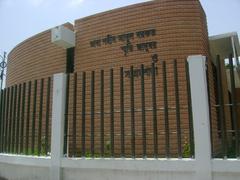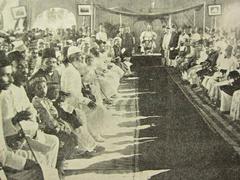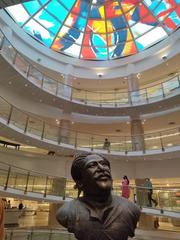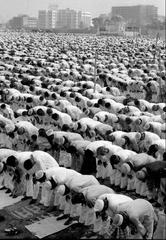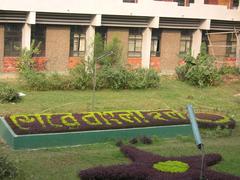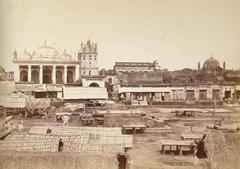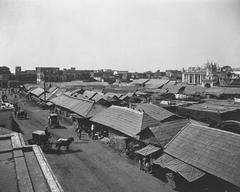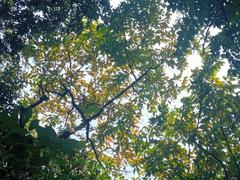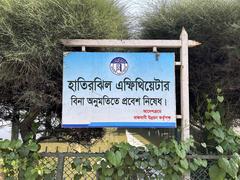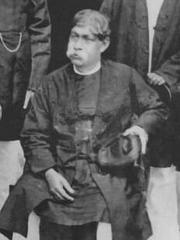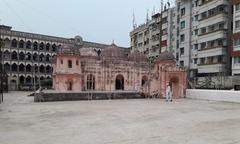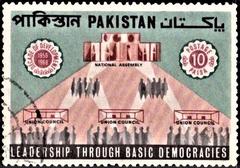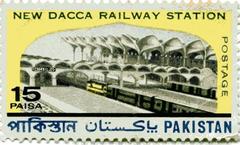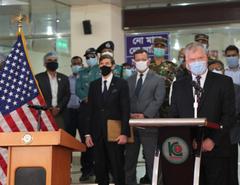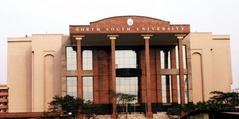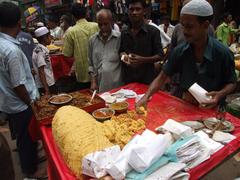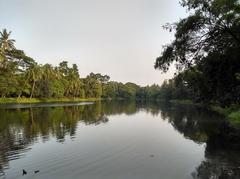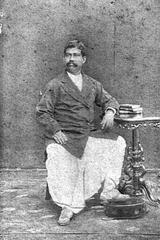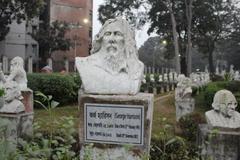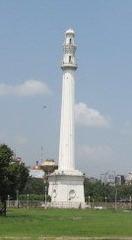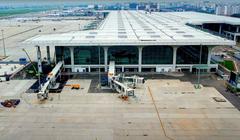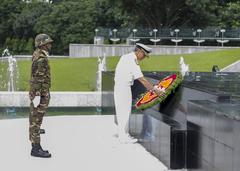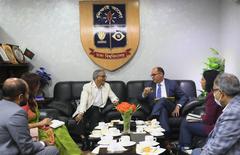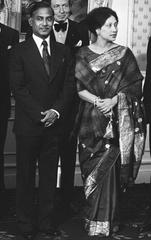
Rose Garden Palace: Visiting Hours, Tickets, and Comprehensive Guide to Dhaka’s Historical Gem
Date: 04/07/2025
Introduction
The Rose Garden Palace, located on K.M. Das Lane in Tikatuli, Old Dhaka, stands as a magnificent symbol of Bangladesh’s layered history, architectural brilliance, and political transformation. Originally constructed in the late 19th century by Hindu zamindar Hrishikesh Das, this neoclassical estate was envisioned as a venue for elite social gatherings. Over time, it has become a living testament to Dhaka’s cosmopolitan aspirations and the nation’s struggle for independence, most notably as the birthplace of the Awami League (The Daily Star; bdnews24.com).
Today, the Rose Garden Palace is in the process of being transformed into a museum and cultural center, inviting visitors to experience not only its stunning architecture and tranquil gardens but also its pivotal role in shaping Bangladesh’s identity. This guide provides detailed, up-to-date information on the palace’s history, visiting hours, ticketing, facilities, accessibility, and tips for making the most of your visit, ensuring a memorable and enriching experience for history enthusiasts, cultural explorers, and tourists alike.
Table of Contents
- Historical Background and Architectural Heritage
- Political Significance: Birthplace of the Awami League
- Social and Cultural Legacy
- Visiting Rose Garden Palace: Practical Information
- Conservation and Restoration Efforts
- Frequently Asked Questions (FAQ)
- Conclusion and Recommendations
- Sources and Further Reading
Historical Background and Architectural Heritage
Origins and Construction
Built in 1931 by Hrishikesh Das, the Rose Garden Palace was designed to rival other elite venues in Dhaka, especially the famed Baldha Garden. The estate sprawled across 22 bighas, featuring imported soil and a collection of rare rose species, lending the palace its evocative name (The Daily Star; Wikipedia). Eventually, due to financial strain, Das sold the property in 1936 to Moulvi Kazi Abdur Rashid, and it became known as “Rashid Manzil.” Over the decades, the palace remained a prominent venue for social events and even served as a filming location for iconic movies.
Architectural Features
Rose Garden Palace is renowned for its neoclassical design, featuring:
- Grand Corinthian Columns: Ten columns, each about 34 feet tall, bestow a stately presence.
- Elaborate Facades and Towers: The palace’s light ash façade (once pink) is adorned with an ornate tower, triple-arched entrance porch, and spiral staircase.
- Room Layout: The ground floor comprises three rooms, including a central hall; the upper floor has three more, centered around a dance hall.
- Verandas and Balconies: Five cantilever verandahs surround the building, and an elliptical balcony overlooks the gardens.
- Decorative Motifs: Floral ceiling patterns, green mirrors, Belgian stained glass, and ironwork reflect a blend of European and Mughal influences.
- Garden Design: Originally, the grounds boasted international rose varieties, a rectangular pond, marble statues, and a brick-and-cement fountain (Bangladesh Travel Update; City Traveler BD).
Political Significance: Birthplace of the Awami League
On June 23, 1949, the Rose Garden Palace hosted the founding meeting of the Awami Muslim League (later Awami League), attended by influential leaders including Bangabandhu Sheikh Mujibur Rahman (bdnews24.com). This seminal event set the stage for the political movement that would eventually culminate in Bangladesh’s independence in 1971.
During the 1940s and 1950s, the palace became a hub for political activism, nurturing the language movement and nationalist struggles that defined the era (The Daily Star).
Social and Cultural Legacy
Beyond its political role, the Rose Garden Palace has long been a center for Dhaka’s social and cultural life. It served as a venue for musical soirées, weddings, and gatherings, and featured in films such as “Harano Din.” Today, the venue continues to promote cultural exchange, exemplified by events like Francophonie Day hosted by the French Embassy (bdnews24.com).
Visiting Rose Garden Palace: Practical Information
Visiting Hours
Due to ongoing restoration, visiting hours may change. Typically, the palace is open to visitors from Tuesday to Sunday, 10:00 AM to 5:00 PM, and closed on Mondays and public holidays. Verify current hours through local sources or official museum announcements before planning your visit (Triphobo).
Ticket Prices and Purchase
- General Admission: BDT 100 for adults; BDT 50 for children. Foreign visitors may pay a higher fee (BDT 300, as per some sources).
- Discounts: Available for students and senior citizens.
- Special Access: Separate, lower-cost tickets for indoor archives or special exhibitions may be required (Inspireli).
- How to Buy: Tickets can be bought at the entrance or online (when available via official channels).
Accessibility
- Wheelchair Access: The ground floor and garden areas are wheelchair accessible; upper floors may have limited access due to heritage preservation constraints.
- Restrooms: Accessible restrooms are provided.
- Support: Contact management in advance for special arrangements.
Facilities and Amenities
- Parking: Under Hanif Flyover, 500 meters from the palace, with a horse-drawn carriage ride to the museum entrance (Inspireli).
- Information Desk & Lockers: Located on the ground floor for visitor convenience.
- Cafés: Traditional Bengali cuisine available on-site.
- Library & Research Center: On the second floor, with a bridge to the terrace and research facilities.
- Temporary Galleries and Multipurpose Halls: Open to the public for exhibitions, events, and seminars.
Travel Tips
- Best Time to Visit: November to February for cooler weather; mornings or late afternoons to avoid midday heat.
- Transport: Rickshaws, taxis, and public buses serve Old Dhaka; parking is off-site.
- Photography: Permitted in the gardens and most public areas; respect other visitors and heritage artifacts.
- Guided Tours: Available at set times (often 11:00 AM and 3:00 PM); inquire at the entrance.
Nearby Attractions
Enhance your visit by exploring other Dhaka landmarks within proximity:
- Ahsan Manzil: The Pink Palace, a former Nawab residence.
- Lalbagh Fort: 17th-century Mughal fort.
- Dhakeshwari Temple: Historic Hindu temple.
- Armenian Church: 18th-century church reflecting Dhaka’s multi-faith heritage.
Conservation and Restoration Efforts
The Rose Garden Palace was declared a national heritage site in 1989 and acquired by the government in 2018 for conversion into the Dhaka Heritage Museum (The Daily Star; Context BD). Restoration focuses on:
- Architectural Conservation: Preserving original elements while upgrading infrastructure (e.g., electrical fittings approved by conservation experts).
- Sustainable Management: Relocating parking, introducing green spaces, and using energy-efficient designs.
- Community Engagement: Reopening historical entrances, reviving traditional art, and providing recreational areas.
- Research and Education: A dedicated center supports ongoing heritage studies and public awareness (Inspireli; Scribd).
Frequently Asked Questions (FAQ)
Q: What are the Rose Garden Palace visiting hours?
A: Usually Tuesday to Sunday, 10:00 AM to 5:00 PM; closed Mondays. Confirm locally before visiting.
Q: How much do tickets cost?
A: BDT 100 for adults, BDT 50 for children; discounts for students/seniors. Archives or exhibitions may require a separate small fee.
Q: Is the palace accessible for visitors with disabilities?
A: Yes, ground floor and gardens are accessible; upper floors may have limitations.
Q: Are guided tours available?
A: Yes, typically at 11:00 AM and 3:00 PM. Inquire at the entrance for current schedules.
Q: Where can I park?
A: Under Hanif Flyover, with a carriage ride to the museum.
Q: Can I take photographs?
A: Yes, in public areas; be considerate of other guests.
Q: What other sites can I visit nearby?
A: Ahsan Manzil, Lalbagh Fort, Dhakeshwari Temple, and Armenian Church.
Conclusion and Recommendations
The Rose Garden Palace is a vibrant nexus of Dhaka’s architectural, political, and cultural history. As it transitions into a state-of-the-art museum and cultural center, visitors can expect a blend of historic grandeur, educational exhibits, and modern amenities. For the best experience, check the latest visiting hours and ticketing details due to ongoing restoration, take advantage of guided tours, and explore nearby historic sites to enrich your journey through Dhaka’s living heritage.
Stay updated with the latest news, virtual tours, and visitor resources by downloading the Audiala app and following official heritage channels.
Sources and Further Reading
- Rose Garden Palace: History, Passion and Pride – The Daily Star
- Rose Garden Palace Dhaka: Visitor Guide – Bangladesh Travel Update
- Rose Garden Palace: Francophonie Values – bdnews24.com
- Rose Garden Palace Visiting Hours, Tickets & Guide – Triphobo
- Rose Garden Palace – Wikipedia
- Rose Garden Reimagined: Bridging Dhaka’s Past and Present – Context BD
- Trek Zone: Rose Garden Palace
- A Lonely Traveler: Rose Garden Palace
- Inspireli Project Details
- Scribd: Rose Garden 1st floor Electrical Fitting Plan



